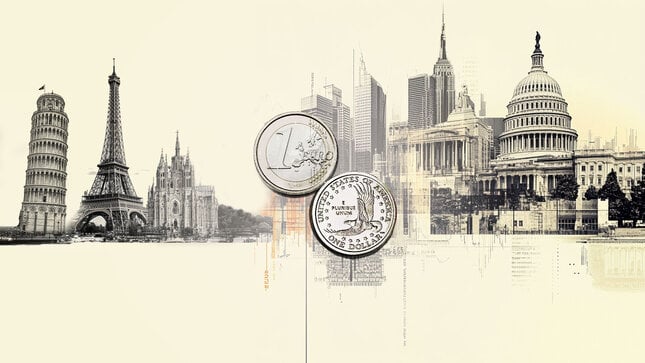While the US Federal Reserve was the first among the world major central banks to introduce the extraordinary supporting measure in response to the global financial crisis, it is also the first one to seek the exit strategy towards policy normalization.
While The US Fed and the Bank of Canada are clearly in the rate hiking cycle, the policy rate movement elsewhere is rather more data dependent.
The US Federal Reserve
The Federal Reserve Bank increased the target range for overnight deposits once in 2016 and three times in 2017. With December 2017 economic projections it is set to hike rates for at least another three times in 2018. With major tax overhaul due in 2018, some market analysts predict that the Fed will be more aggressive and it will increase the policy target range four times in 2018 as a fiscal policy will overtake the monetary policy in stimulating the US economy.
The US Federal Reserve hiked the rates as part of the hiking cycle, there are two other major central banks that followed the Fed with rate increases, the Bank of Canada and the Bank of England. While the Bank of England increased the Bank rate by 25 basis points in November saying the move is aimed at removing the extra monetary stimulus the UK economy does not need any more in light of post-Brexit inflation surge, the Bank of Canada increased the rates twice with two more rate hikes coming in throughout 2018.
The Bank of England
The Bank of England delivered an extraordinary dovish rate hike saying the UK economy is running at, or above its potential driven by the labor market strength while inflation is peaking above 3% year-to-year. The Bank of England also said it sees another two rate hikes within three-year forecast horizon lifting the Bank rate possibly once in late 2018 and once in 2019. With four interest rate hikes in the US and the only one coming conditionally in the UK in 2018, the interest rate differential, as well as the growth rate differential, plays in favor of the US Dollar.
The Bank of Canada
On the other hand, the story of interest rate increases in Canada is much more tangible. Strong retail sales in November and the inflation rate shooting over the inflation target in November is increasing the chances of the Bank of Canada raising the rates as early as in January 2018 in support for the Canadian Dollar.
Higher oil prices support Loonie and the closer the exchange rate gets to C$1.2000 level, the higher probability of the ultimate interest rate differential between the US and Canada to prevail in favor of the US Dollar. While short-term outlook for USD/CAD is bearish, the long-term it is rather range bound in C$1.2000-C$1.2900 range. Bear in mind that excessive CAD appreciation towards C$1.2000 is Canada’s growth negative with verbal intervention coming in soon after.
The Bank of Japan
Although it is the Bank of Japan that originated the idea of the asset purchasing in order to support the economy, a major activity in terms of quantitative easing in Japan came into force with the election of Prime Minister Shinzo Abe and his nominee Haruhiko Kuroda at the helm of the Bank of Japan. The Bank of Japan introduced and extended the asset purchasing back in 2015 and the ECB had joined in 2016.
There is nothing in the economic substance for the Bank of Japan to end its asset purchasing program at the moment. The Bank of Japan acknowledged the progress in Japan’s economy, but the inflation rate is still far away from the target leaving the Bank of Japan inactive for 2017 and it is also expected to stand pat on rates in 2018.
The ECB
The European Central Bank has done a good job in anchoring the medium term inflation expectations while introducing the unorthodox monetary toolkit with its asset purchasing program.
The scale of the asset purchasing has been reduced during 2017 with the further reduction due for 2018. The volume of monthly asset purchases will be halved since January 2018 to EUR 30 billion with the program coming to an end in September 2018.
With EUR/USD rallying to its 2017 high of $1.2092 on September 8, 2017, the scope for a further move higher is limited even with the asset purchasing approaching. Similarly to CAD, the Euro’s appreciation is likely to spur the policy response, most likely verbal intervention similar to the one from 2017 when ECB Governing Council members felt obliged to comment on euro being too strong at around $1.2000 level.
Antipodeans, the RBA, and the RBNZ
There is nothing new on the southern front, the classic literature might say about the monetary policy in Australia and New Zealand. Both central banks are seen standing pat on interest rates in 2018. The RBNZ is unlikely to signal tighter policy as the slowdown in migration intensifies the downturn in the housing market and argues against a policy response to upside inflation risks from the minimum wage increase.
Elsewhere in Europe
Strong economic growth and inflation close to the target keep monetary policy at the brink of tightening in Sweden and Norway, while in Czech republic the central bank has already jumped into the tightening cycle.
Czech National Bank increased the policy rates twice in 2017 in August and in November with another rate increases likely in 2018. This should support CZK against EUR in a move towards 25.000 EUR/CZK.
Swedish Riksbank decided to keep the interest rates steady in negative territory but indicated that it will begin slowly raising the repo rate in the middle of 2018. The Executive Board has also decided to begin re-investing in January 2018 the bonds that mature in 2019.
Note: All information on this page is subject to change. The use of this website constitutes acceptance of our user agreement. Please read our privacy policy and legal disclaimer. Opinions expressed at FXstreet.com are those of the individual authors and do not necessarily represent the opinion of FXstreet.com or its management. Risk Disclosure: Trading foreign exchange on margin carries a high level of risk, and may not be suitable for all investors. The high degree of leverage can work against you as well as for you. Before deciding to invest in foreign exchange you should carefully consider your investment objectives, level of experience, and risk appetite. The possibility exists that you could sustain a loss of some or all of your initial investment and therefore you should not invest money that you cannot afford to lose. You should be aware of all the risks associated with foreign exchange trading, and seek advice from an independent financial advisor if you have any doubts.
Recommended Content
Editors’ Picks

EUR/USD accelerates losses to 1.0930 on stronger Dollar
The US Dollar's recovery regains extra impulse sending the US Dollar Index to fresh highs and relegating EUR/USD to navigate the area of daily troughs around 1.0930 in the latter part of Friday's session.

GBP/USD plummets to four-week lows near 1.2850
The US Dollar's rebound keep gathering steam and now sends GBP/USD to the area of multi-week lows in the 1.2850 region amid the broad-based pullback in the risk-associated universe.

Gold trades on the back foot, flirts with $3,000
Gold prices are accelerating their daily decline, steadily approaching the critical $3,000 per troy ounce mark as the Greenback's rebound gains extra momentum and US yields tighten their retracement.

Can Maker break $1,450 hurdle as whales launch buying spree?
Maker holds steadily above $1,250 support as a whale scoops $1.21 million worth of MKR. Addresses with a 100k to 1 million MKR balance now account for 24.27% of Maker’s total supply. Maker battles a bear flag pattern as bulls gather for an epic weekend move.

Strategic implications of “Liberation Day”
Liberation Day in the United States came with extremely protectionist and inward-looking tariff policy aimed at just about all U.S. trading partners. In this report, we outline some of the more strategic implications of Liberation Day and developments we will be paying close attention to going forward.

The Best brokers to trade EUR/USD
SPONSORED Discover the top brokers for trading EUR/USD in 2025. Our list features brokers with competitive spreads, fast execution, and powerful platforms. Whether you're a beginner or an expert, find the right partner to navigate the dynamic Forex market.